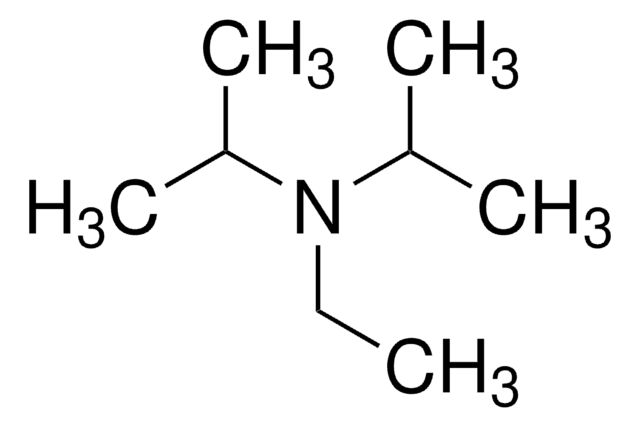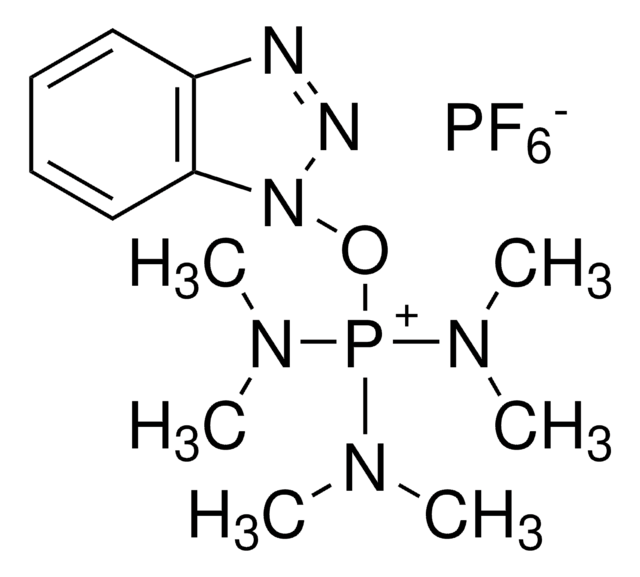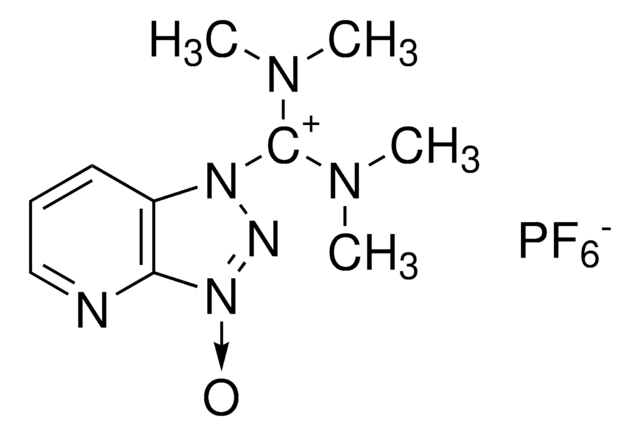All Photos(3)
About This Item
Empirical Formula (Hill Notation):
In
CAS Number:
Molecular Weight:
114.82
EC Number:
MDL number:
UNSPSC Code:
12141719
PubChem Substance ID:
NACRES:
NA.23
Recommended Products
vapor pressure
<0.01 mmHg ( 25 °C)
Quality Level
Assay
99.99% trace metals basis
form
powder
resistivity
8.37 μΩ-cm
mp
156.6 °C (lit.)
density
7.3 g/mL at 25 °C (lit.)
SMILES string
[In]
InChI
1S/In
InChI key
APFVFJFRJDLVQX-UHFFFAOYSA-N
Looking for similar products? Visit Product Comparison Guide
General description
Indium is a silvery-white soft metal with aface-centered tetragonal crystalline structure. It becomes superconductingat 3.37 K. It improves alloys′ hardness, corrosion resistance, andstrength.
Application
Indium can be used as a:
- Dopant to tune the electrical and photoelectrical properties of CdSe nanowires.
- Negative electrode material for Mg-ion batteries.
- Reducing agent in many organic transformations because of its low first ionization potential.
Signal Word
Danger
Hazard Statements
Precautionary Statements
Hazard Classifications
Acute Tox. 4 Inhalation - Eye Irrit. 2 - Flam. Sol. 1 - Skin Irrit. 2 - STOT SE 3
Target Organs
Respiratory system
Storage Class Code
4.1B - Flammable solid hazardous materials
WGK
WGK 3
Flash Point(F)
Not applicable
Flash Point(C)
Not applicable
Personal Protective Equipment
dust mask type N95 (US), Eyeshields, Gloves
Choose from one of the most recent versions:
Already Own This Product?
Find documentation for the products that you have recently purchased in the Document Library.
Tuning electrical and photoelectrical properties of CdSe nanowires via indium doping.
Zhubing He et al.
Small (Weinheim an der Bergstrasse, Germany), 5(3), 345-350 (2008-12-06)
Juan Zhou et al.
Chemical communications (Cambridge, England), 49(22), 2237-2239 (2013-02-12)
A reduced graphene oxide (RGO)-ZnIn(2)S(4) nanosheet composite was successfully synthesized via an in situ controlled growth process. The as-obtained RGO-ZnIn(2)S(4) composite showed excellent visible light H(2) production activity in the absence of noble metal cocatalysts.
G W Shu et al.
Physical chemistry chemical physics : PCCP, 15(10), 3618-3622 (2013-02-06)
Nonradiative energy transfer from an InGaN quantum well to Ag nanoparticles is unambiguously demonstrated by the time-resolved photoluminescence. The distance dependence of the energy transfer rate is found to be proportional to 1/d(3), in good agreement with the prediction of
Ching-Hwa Ho et al.
ACS applied materials & interfaces, 5(6), 2269-2277 (2013-03-05)
The surface formation oxide assists of visible to ultraviolet photoelectric conversion in α-In2Se3 hexagonal microplates has been explored. Hexagonal α-In2Se3 microplates with the sizes of 10s to 100s of micrometers were synthesized and prepared by the chemical vapor transport method
Han-Youl Ryu et al.
Optics express, 21 Suppl 1, A190-A200 (2013-02-15)
We investigate the dependence of various efficiencies in GaN-based vertical blue light-emitting diode (LED) structures on the thickness and doping concentration of the n-GaN layer by using numerical simulations. The electrical efficiency (EE) and the internal quantum efficiency (IQE) are
Our team of scientists has experience in all areas of research including Life Science, Material Science, Chemical Synthesis, Chromatography, Analytical and many others.
Contact Technical Service







